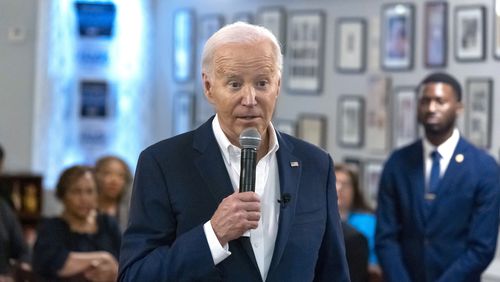School systems across Georgia are grappling with providing parents who want to move their children out of low-performing schools with enough options.
In many districts, more students are applying to transfer to high-performing schools, as state law allows, but there are not enough spaces available, and not enough good charter schools to fill the need. Student transfer requests are turned down, often with little explanation, leaving parents frustrated.
“I don’t think it’s (school choice) a reality at all,” said one Cobb County parent who said her transfer requests for her son and daughter were denied.
Parents complain they are not told much about how the decisions are made. School leaders in Cobb are reviewing their policies, and DeKalb officials have said changes are coming, after complaints from parents calling for more transparency.
The number of students seeking transfers in Cobb increased from 999 in 2012-2013 to 2,794 this year. Sixty-seven percent of applicants were moved in 2012-2013 and 63 percent were moved this year.
DeKalb has also seen a steady increase in transfer applicants. For school year 2013-14, the system received approximately 14,750 applications, with 5,500 approved, or 37 percent. For 2015-16, there were 16,000 applications, with nearly 6,400 approved, a slight uptick to 40 percent.
In Cobb, if a student does not get selected via the district’s lottery system, they’re put on a waiting list. However, parents say they’re not told where they rank on the list.
In DeKalb, parents are angered by the selection process for the county's magnet schools and say they want to see the program expand or go away. This year, a new computer-generated lottery system to select students for the magnet program omitted some students by mistakenly classifying them as living outside the district. For other students, the system dropped grades from their profile.
Telling parents where they rank on waiting lists and giving as much information as possible about the school-choice process is “fundamental,” said Claire Smrekar, associate professor of education and public policy at Vanderbilt University, who has written extensively about school choice.
“It gives most parents some degree of assurance that this system is fair, consistent,” she said. “That there’s clarity and transparency. To have that gap in information, failure to provide that basic information is really appalling.”
Cobb school board member David Morgan says schools should have uniform criteria or a formula for deciding if they have space for transferees. He has called on the superintendent to review the school choice policy. A report is expected in September.
Right now, the decision to admit transfers can be subjective and inconsistent– and some parents say unfair.
“I believe it’s intentionally nebulous because then you can just kind of make rules as you go,” Morgan said.
“This is very stressful for any parent to send their child to a school and feel like that’s not where I want my child to be,” he added. “People want to access a learning environment that puts their child in the best position to learn. A district needs to do everything it can to accommodate your customer base, who are the parents and the children.”
State lawmakers passed new rules beginning in 2009-10 to make it easier for students to switch schools. House Bill 251 directs systems to establish rules for granting inner-district transfers to any public school that has space.
Parents sometimes face desperate decisions trying to get their children out of failing schools. Karen Armstrong says she had little choice after moving across the county but to sign over temporary guardianship of her son to her sister so he could continue attending a high-performing school in East Cobb.
Armstrong moved from East Cobb to Powder Springs in South Cobb when she married nearly five years ago, and she said her middle school-age son was being bullied and not getting the attention he needed from teachers at the lower-performing South Cobb school. So her son went to live with her sister for a year so he could finish middle school in East Cobb.
“It tore me apart, it was horrible. He was like an hour away,” Armstrong said.
Armstrong said she also tried to get her 6-year-old daughter into higher-performing schools outside her attendance zone and was denied.
“There was really no communication from the school system at all,” Armstrong said. “You get a call, and it’s not even a person, it’s a recording to let you know your child hasn’t been accepted, and after that there was no kind of communication to let me know if (she) was on a waiting list or anything.”
Armstrong and other parents argue that if a certain number of students want to get into a school, education officials should accommodate them with space and enough teachers. Morgan points out that Cobb doesn’t consider trailers on school property as available “space.” She thinks they should.
“As a parent, if I make a choice that a particular school is in my child’s best interest, and there’s a phenomenal teacher that happens to be teaching in a trailer, put my child there.”
Georgia House Education Chairman Brooks Coleman, R-Duluth, acknowledges work needs to be done to make school choice more available.
“I’m an advocate of choice. I think parents should have some say-so in choice,” he said.
“It’s up to the local (school) boards how they want to operate that.”
Smrekar, the Vanderbilt professor, said, “The school choice idea has been equated to a market, where competition will drive quality. And mediocre will fall out of that market and high performing producers (schools) will thrive because the market will push more consumers in their direction. So competition drives quality. But we know now after some three decades of school data and scholarly analysis that this market doesn’t benefit everyone and has lots of quirks and is driven often by context and social class.”
“It’s a supply-side problem. It’s a problem of inadequate market, inadequate supply of high-quality schools.”






